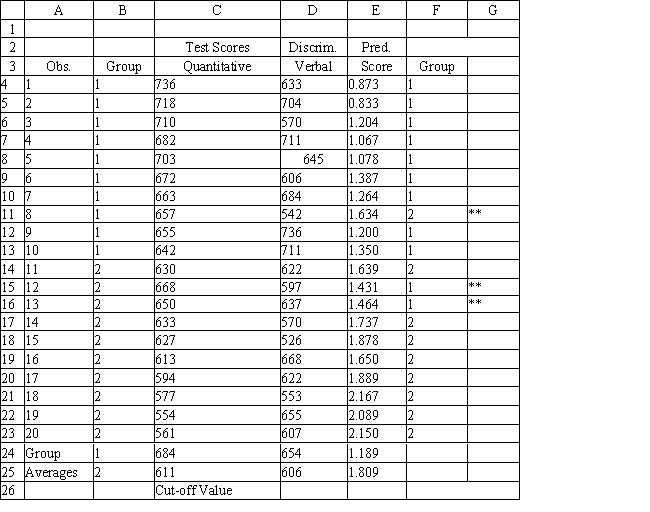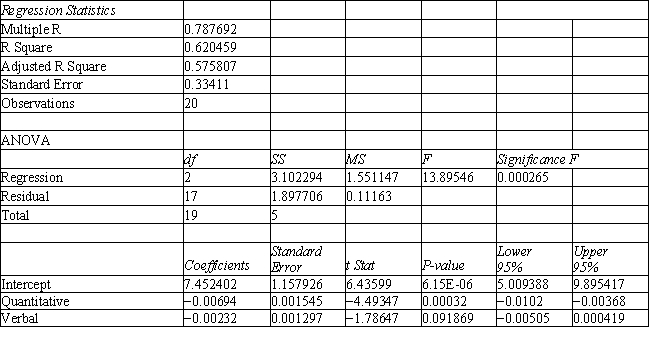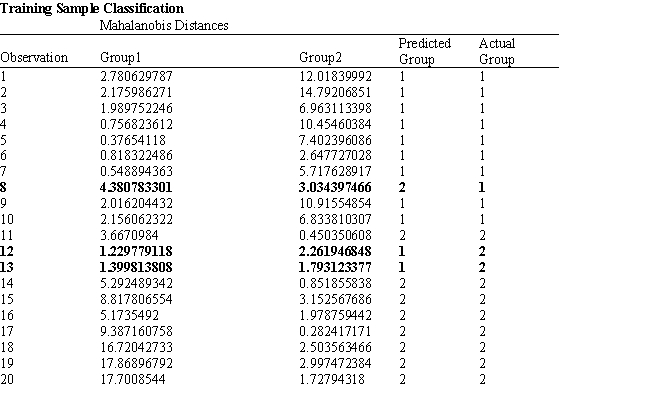Multiple Choice
Exhibit 10.1
The following questions are based on the problem description and the output below.
A college admissions officer wants to evaluate graduate school applicants based on their GMAT scores, verbal and quantitative. Students are classified as either successful or not-successful in their graduate studies. The officer has data on 20 current students, ten of whom are doing very well (Group 1) and ten who are not (Group 2) . 




-Refer to Exhibit 10.1. Suppose that for a given observation, the difference between Mahalanobis distances between group 1 and 2 (G1-G2) is big and positive. This means that
A) The observation is likely to be classified correctly to group 2
B) The observation is likely to be classified correctly to group 1
C) The observation is likely to be classified incorrectly to group 2
D) The observation is likely to be classified incorrectly to group 1
Correct Answer:

Verified
Correct Answer:
Verified
Q85: The Fisher classification scores can be converted
Q86: Affinity analysis is a data mining technique
Q87: Neural networks are<br>A) a pattern recognition technique<br>B)
Q88: A correlation coefficient<br>A) measures the strength of
Q89: Oversampling forces a classification method to<br>A) discriminate
Q91: Exhibit 10.6<br>The information below is used for
Q92: Exhibit 10.4<br>The information below is used for
Q93: In the k nearest neighbor technique, a
Q94: Exhibit 10.3<br>The information below is used for
Q95: Suppose that there are 3 variables in